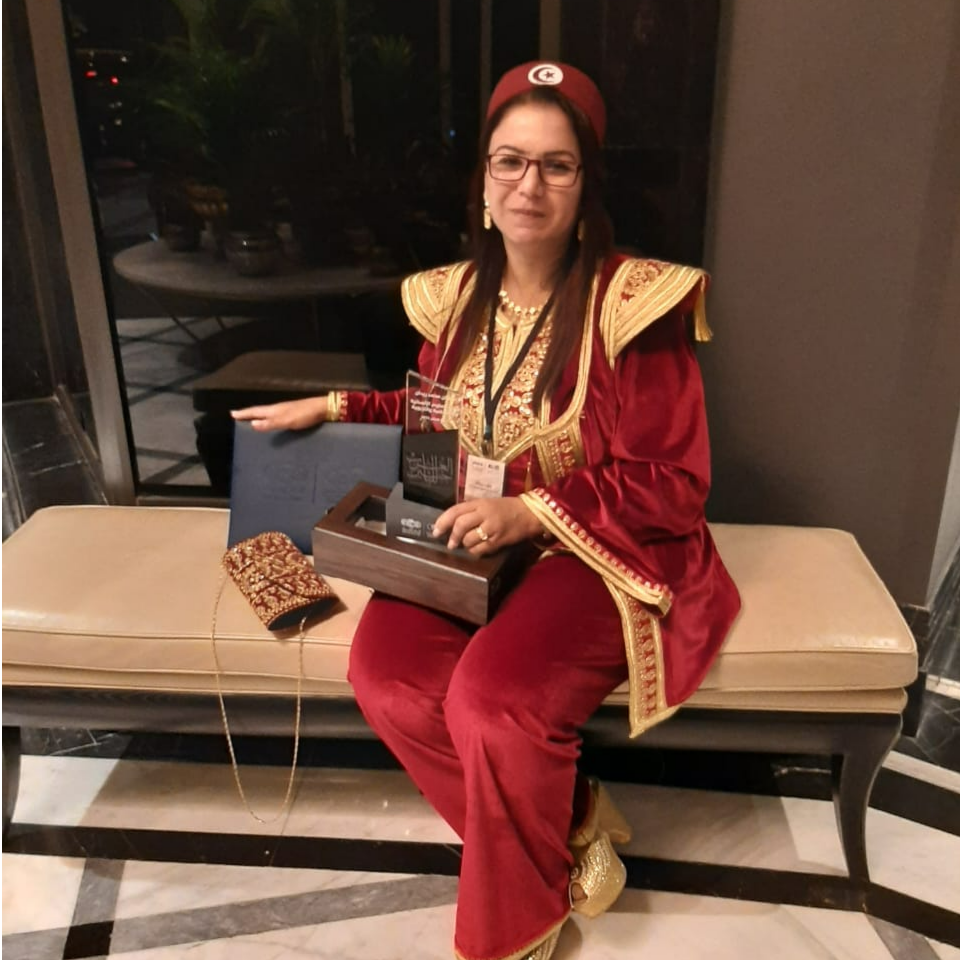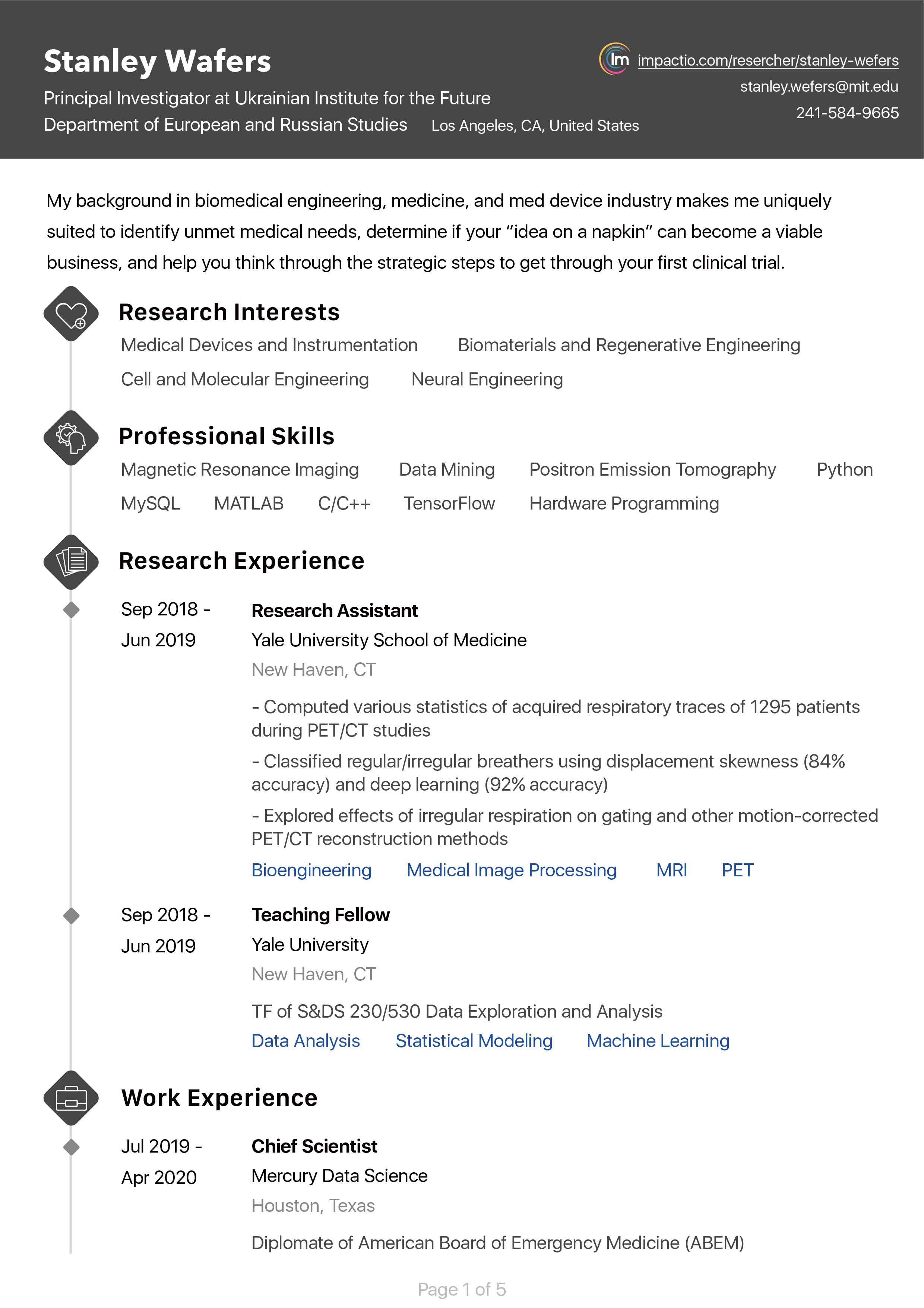About
Assistant Professor in Film Studies in the Higher Institute of Theater and Music el Kef -University of Jendouba, and in the Centrale'Com-Université Centrale Honoris United Universities, Tunisia Winner of International Shoman Price for Arab Researchers In Film Studies Session 2022/ Permanent member of the Democratic Arab Center Berlin-Germany Quadrilingual, keen on Cinema and the developed immersive didactics to teach it Editor/Reviewer in many Scientific Journals and president of two conferences
Contractual Assistant in Cinema and Audiovisual
September 2016 - Present
Tunis, Tunisia
Taught Subjects:
Aesthetics of the Filmic Image // Introduction to the Production // History of Cinema // Films Genres // Films Analytics //Jobs & Occupation of Audiovisual & Cinema Field
High School of Audiovisual and Cinema ESAC Gammarth-Carthage University
Sep 2017 - Jun 2020
Cinema & Audiovisual
High School of Audiovisual and Cinema ESAC Gammarth-Carthage University
Sep 2014 - Jul 2016
Cinema and Audiovisual
International Scientific Symposium about ART'S CONCERN
ART'S CONCERN
The transition to the Immersive Didactics From educational solutions during the confinement of Covid-19 to the teaching in the metaverse
To share metaverse soultions that were used as didactics during the pandemic, and still used as an enhacer of the teaching methodologies in the whole human and exact sciences fields
according to the request of some researchers, we extend the deadline of submission to the 12th of November 2022, yet sent contributions could be updated using the attached template
contributions are welcomed in arabic/french /english,
pages' number requested (min 10 max 30, abstract and references included)
contributions should be sent to the scientific committee's president Dr Ali Chamseddine
dr.ali.chamseddine@democraticac.de
template attached to this update
Rythm in the concepts of audio and visual arts**الإيقاع في مفاهيم الفنون السمعيّة والبصريّة
DOI: 10.13140/RG.2.2.23740.51842
LicenseCC BY-NC-ND 4.0
بناء على طلب العديد من الباحثين تم التمديد الى غاية الخامس والعشرين من الشهر الجاري (ماي 2022) لارسال المداخلات لمؤتمر الإيقاع في الفنون السمعية والبصرية
***اللغات المسموحة للتحرير: عربية -فرنسية-انجليزية
***عدد الصفحات الادنى 10- الاقصى 25 (بما فيها قائمة المراجع بنظام ابا الآلي APA)
***استخدام قوالب المقال الممكن تحميلها من صفحة النداء على موقع المركز الديمقراطي العربي برلين-ألمانيا
ارسال المداخلات على العنوان التالي: dr.faten-ridene@democraticac.de
At the request of many researchers, the deadline was extended until the twenty-fifth of this month (May 2022) to send their communications for the international Conference : Rhythm in Audio and visual Arts
*** allowed languages: Arabic-French-English
***Minimum number of pages 10- Maximum 25 (including the list of references in the APA automated system)
***Using article templates that can be downloaded from the call page on the website of the Arab Democratic Center Berlin-Germany
Contributions should be sent to the following address: dr.faten-ridene@democraticac.de
Suite à la demande de plusieurs chercheurs, la date limite a été prolongée jusqu'au vingt-cinq de ce mois (mai 2022) pour envoyer les interventions pour le congrès international: Le rythme dans les arts acoustiques et visuels
*** Langues autorisées pour la rédaction : Arabe-Français-Anglais
***Nombre minimum de pages 10- Maximum 25 (y compris la liste des références dans le système automatisé APA)
*** les contributeurs sont priés d'utiliser les modèles d'articles téléchargeables à partir de la page d'appel sur le site officiel du Centre démocratique arabe Berlin-Allemagne
Les contributions devraient être envoyées à l'adresse suivante : dr.faten-ridene@democraticac.de
روابط النداء-call links
https://democraticac.de/?p=81668
https://www.democraticac.de/?p=81124
https://calenda.org/987953
Cinema and Pandemic :between creativity barrier and flourishing booster: consequences of the pandemic Covid19 on film production and distribution
Study the effect of COVID 19 on film production/distribution/festivals/need as mean of creativity during confinement
Covid 19 vaccine attitudes
the attitudes of people in your country
Arab Research Union
Arab Research Union
Welcome to all the distinguished professors, doctors and researchers in this project, which aims to exchange experiences.
English as a global language and its impact on other languages
English has become the only international language because it is the language of science, AI, computers, and all other branches of knowledge, in addition to being the language of international trade and banking, and diplomacy. The project aims at exploring the impact of English on the competitive linguistic environments, as well as on all other languages.
Technology in Educational and Psychological Studies
1. Investigate the educational and social effects of technology and online learning advancement on global and local communities
2. Disseminate research/ conferences work and papers regarding technology and e-learning impacts on education/psychology disciplines
3. Form teams of researchers in the field of technological effects in education and psychology fields
4. Highlight the best practices followed by educationalists to deal with the effects of the technology and ubiquitous learning
5. Propose practical solutions on how to deal with technology impacts in the educational, psychological and social curricular design/development
6. Understand the educational, psychological, and social impacts of the emerging technologies in terms of mobile and blended learning
Conferences Organisation
The representation of the cultural heritage through Tunisian Cinema: a comparative study
الموسيقى في السينما : تمثلات اثنو-بسيكولوجية*La Musique au Cinéma : des représentations ethno-psychologiques
La Musique au Cinéma: des Représentations Ethnopsychologiques
DOI: 10.13140/RG.2.2.19707.87845/1
« La valeur sensorielle, informative, sémantique, narrative, structurelle ou expressive qu'un son entendu dans une scène nous amène à projeter sur l'image, jusqu'à créer l'impression que nous voyons dans celle-ci ce que en réalité nous y “audio-voyons”. Cet effet, utilisé très couramment, est la plupart du temps inconscient pour ceux qui le subissent. Pour en prendre conscience et en retrouver le mécanisme, il nous faut décomposer le mixage audio-visuel, en observant séparément le son et l'image d'une même séquence. Ce n'est qu'alors qu'on s'aperçoit que par des effets divers, le son ne cesse d'influencer ce que l'on voit » (Chion, 2006, p. 221) .
Argumentaire :
Né muet, tout film conduisit son réalisateur à y joindre une musique, afin de le tamponner d’une affection, qui fait appel à l’audience pour révéler l’induction qu’elle peut sentir, à travers des sourires, des larmes, des applaudissements ou des grimaces. Et avec le temps, tout a évolué : toute une bande sonore peut accompagner un film, pouvant être distinguée, que ce soit à travers une voix-in où une chanson manifeste le sentiment d’un personnage et transmet son émotion au public, une voix-off qui se différencie par une chanson interprétée, non pas par les acteurs, mais accompagnant leur méditation, une ’musique-in’ que joue -ou semble jouer- un comédien, en liaison avec la distinction du personnage (amateur ou professionnel de musique), une ‘musique-off’ qui accompagne une scène pour la placer dans un cadre sensationnel spécifique, un bruitage qui imite des voix naturelles par d’autres créées en intime liaison avec le scénario, un silence absolu qui invite l’auditeur à une concentration plus profonde avec la scène, pouvant même toucher son cogito… Toutes ces variations de fragmentations sonores, ne représentent autre que des pièces qui complètent un puzzle, des maillons dont la liaison aboutit à une chaine aussi solide, une œuvre d’art qu’on appelle un film de fiction.
La musique, dans le cinéma, joue un rôle primordial : elle argüe la psychologie des personnages, leurs distinctions ethniques, voire celles du scénariste, acteur, musicien, monteur ou réalisateur du film. Le premier ordonne que le personnage soit visionné dans un état psychique et identitaire bien défini, le second utilise ses grimaces et mouvements comme une pâte à modeler, pour représenter le personnage, d’une manière la plus proche possible de l’état décrit au scénario. Cette perfection n’est atteinte que par les répétitions d’une même scène, n fois, pour que le monteur en choisisse la meilleure. Mais même la meilleure répétition d’une même scène, bien chronologiquement montée par rapport à la totalité du film, figure insuffisante pour convaincre le public : une bande musicale doit alors s’ajouter, afin de permettre aux spectateurs de se sentir plongés dans l’histoire, prenant la place des acteurs, souffrant leur problème, vivant leur joie, disséquant leurs différentes situations, états psychiques et ethniques, au point de dire : je me vois dans ce rôle, cet état me concerne, j’ai vécu ce problème, ou simplement : le réalisateur a raison ! De tels messages ne puissent jamais paraître chez le public si la bande sonore fût soustraite du film.
Axes de recherche :
Notre livre collectif baptisé « La musique au cinéma, des représentations éthno-psychologiques » vise à mettre en clair cette distinction, tout en sollicitant des articles qui développent l’un (ou plusieurs) des axes de recherche suivants :
- La voix des protagonistes en interprétant une musique (sans paroles) ou un chant (avec paroles), reflétant l’état psychique du personnage.
- Les bandes musicales accompagnantes aux différentes scènes, adéquatement avec les situations psychiques vécues.
- Le jeu d’acteur avec un instrument musical (réel ou interprété gestuellement) et la véracité de son interprétation devant la caméra.
- Le rôle d’un compositeur d’une bande originale pour un film, et son ‘jeu’ de l’évolution narrative ordinaire aux climax du film.
-La représentation d’une identité, d’un patrimoine, dans un film, par la musique qui ‘l’habille’.
-Les rebondissements sonores dans les films d’animation
-L’imagination en bruitage par la composition de partitions et leur arrangement pour remplacer des voix réelles.
-La véracité d’une scène en silence, sans musique.
إنّ القيمة الحسيّة أو الإخباريّة أو الدلاليّة أو السرديّة أو الهيكليّة أو التعبيريّة ، والتي يقودنا الصّوت المسموع خلال مشهد ما ، لنقوم بإسقاطه على الصورة ، إلى درجة خلق انطباع لدينا بأننا نرى فيها ما في الواقع وبأنّنا في حضرة " الصَّوْتِ المُشَاهَدْ". ما هو إلّا تأثير ، شائع الاستخدام، والذي غالبًا ما يمرّ في لاوعي الذين يتكبّدونه. وبغية أن نكون على دراية بظاهرته، ونعيد اكتشاف آليته ، وجب علينا تفكيك المزيج السمعي-البصري، وذلك عن طريق مراقبة الصوت والصورة من نفس اللّقطة، بشكل منفصل. حينها فقط ندرك أنه من خلال المؤثّرات المختلفة ، لا يتوقف الصوت عن التأثير فيما نراه "(Chion ، 2006 ، صفحة 221)
الديباجة:
بناءً على ولادته صامتا، ظلّ كلّ شريط روائّي يقود مخرجه إلى إرفاقه بمقطوعة موسيقيّة، تعزفها فرقة خلال عرضه، بهدف أن تطبعه بالمشاعر وتجعل المشاهدين يعبرون عن الأحاسيس التي تنتابهم ، وذلك سواء عن طريق الابتسامات ، أو الدموع أو التصفيق أو تقطّب الوجوه.
ومع مرور الزمن تطور كل شيء: إذ بات بإمكان معزوفة كاملة، أُلِّفَتْ باسم الشّريطِ، أن ترافق تطوّر نسق أحداثه فتميزه، سواء من خلال صوت داخلي للإطارِ، أين تتجسّد الأغنية المؤدّاة من طرف الشخصيّة لتنقل مشاعرها إلى الجمهور، أو صوتٍ باطني- يتم تمييزه عن طريق أغنية لا تُنفّذ من قِبل الممثلين ولكن تُرافق تأملاتهم وحركاتهم وأحاديثهم، أو "موسيقى داخليّة" يعزفها الممثلون بآلات داخل الاطار ،أو يُخيّل لنا أنّهم يقومون بعزفها، في حين أنّها ترافق تجسيدهم فقط ، مع امتلاكها لرابط قويّ مع الشخصيّات التي تعزفها(سواء أكانت هاوية أو محترفة في الموسيقى ) ،أو " موسيقى باطنيّة" تُرافق مشهدًا لوضعه في إطار شاعريّ خاصّ ومثير، أو مؤثّرات صوتيّة تُقلّد الأصوات الطبيعية بأخرى اصطناعيّة مخلوقة في علاقة بالسيناريو، أو صمت مطلق يدعو المستمع إلى تركيز عميق مع المشهد قادر حتّى على لمس إحساس الأنا الأعلى لدى المشاهد...
كل هذا التنوّع في الجزئيات الصوتيّة ، لايُمثِّلُ سوى القطع التي تكمل اللّغز، ووصلات ينجح اتصالها لتكوين سلسلة شديدة التماسك، بل لِنَقُلْ قطعةً فنيّةً متكاملةً تُسمى "فيلم الخيال".
إنَّ للموسيقى دورًا أساسيًا وفريدا تلعبه في الأشرطة السّينمائيّة: فهي تجادل نفسيّة الشخصيات ومميزاتها الإثنية، سواءً تلك الخاصة بكاتب السيناريو أو الممثل أو الموسيقي أو مركّب الفيلم أو مخرجه. إذ يأمر الأوّل، أي كاتب السيناريو، أن تُعرض الشخصيّة في حالة نفسية وهويّة، محددتيْن بشكل جيّد، أمّا الثاني، أي الممثّل، فهو المستخدم لملامح وجهه وحركاته مثل التشكيلية، لتمثيل الشخصيّة بطريقة أقرب ما يمكن من الحالة الموضحة في السيناريو. ولا يمكن تحقيق الكمال إلا من خلال تكرار التقاط نفس المشهد ، عديد من المرات، بحيث يختار مُركّب الفيلم أفضلها. ولكن حتى أفضل مشهد تم تركيبه بشكل صحيح، مقارنةً بالفيلم بأكمله، لن يكون كافيا لإقناع الجمهور دون إضافة مقطع موسيقي يجعل المشاهدين منغمسين تماما في قصة الشريط ، سواءً بأخذ مكان الممثّل، للإحساس بمعاناته ومعايشة فرحته أو حزنه وتحليل مختلف وضعياته ، أو عن طريق الإنغماس في حالات نفسية وإثنية إلى حدّ يجعل المشاهد يقول: "إنّي أرى نفسي في هذا الدور!"، أو "إنّ هذه الحالة تهمّني!"، أو "لقد عانيت فعلا من هذه المشكلة في حياتي!"، أو ببساطة: "إنّ المخرج على حق!" . إذا لا يمكن مطلقًا عرض مثل هذه الرسائل على الجمهور إذا تمّ عزل الموسيقى التصويرية عن الفيلم.
محاور البحث:
يهدف كتابنا الجماعي الموسوم بعنوان :"الموسيقى في السينما: التمثلات الإثنو- بسيكولوجيّة." إلى تسليط الضوء على طابع التمييز الذي تضفيه الموسيقى على الأشرطة السينمائيّة التي تُؤَلَّفُ من أجلها، ونلتمس من الباحثين أن يساهموا بمقالات تُطوِّرُ إحدى محاور البحث التالية أو أكثر: -
-صوت الممثّل عند تقمّصه لمقطوعة موسيقيّة، بدون كلمات، أو لأغنية ذات كلمات ، مما يعكس الحالة النفسية للشخصية التي يتقمّصها
- تناسُب الموسيقى المصاحبة مع مختلف المَشَاهِدِ والحالات، بشكل كافٍ ومناسب لفهم المواقف النفسية المُعاشة من طرف الشخصيّات.
- التمثيل باستخدام آلة موسيقيّة (حقيقة أو بالإيماء) ومدى مصداقية الآداء أمام الكاميرا.
- دور ملحّن الموسيقى التصويرية لفيلم وعمله على تطوير سرد القصّة من مراحل عاديّة إلى مواقف الذّروة من أحداث الشّريط.
- تَمثُّلُ الهوية والتراث في الفيلم من خلال الموسيقى التي "تكسوه".
- الارتدادات الصوتيّة في أفلام الصّور المتحرّكة
-الخيال في المؤثرات الصوتية عن طريق تلحين مدوّنات موسيقيّة وتوزيعها لاستبدال الأصوات الحقيقية-
-مدى مصداقيّة المشهد الصامت بدون موسيقى ترافقه.
النّصّ الفرنسي للدّيباجة: فاتن ريدان رايسي
ترجمة نصّ الدّيباجة للّغة العربيّة: د. علي شمس الدّين
مراجعة وتدقيق: فاتن ريدان رايسي
Posters
Posters
منمنمات
ནྱཾ༩ྀ༄ إعلان العدد الأول لمجلة منمنمات ༄ནྱཾ༩ྀ يسر هيئة تحرير مجلة "منمنمات" الصادرة عن مؤسسة APTEES بفرنسا أن تعلم الباحثين والأساتذة والطلبة عن شروعها في إستقبال الأبحاث العلمية باللغات العربية والفرنسية والانجليزية، وذلك تحضيرا للعدد الأول وآخر أجل لإستقبال الأبحاث 20/02/2020 وفق الشروط والقواعد المعلن عليها في الملف المرفق. يتم إرسال الأبحاث على الإيميل التالي: mounamnamet@aptees.fr ནྱཾ༩ྀ༄ بالتوفيق للجميع ༄ནྱཾ༩ྀ
December 2019
DOI: 10.13140/RG.2.2.10508.26248
JUTP: Journal of Urban and Territorial Planning
The Journal of Urban and Territorial Planning
DOI: 10.13140/RG.2.2.15313.07529
JUTP is a quarterly, international peer reviewed journal. It publishes high quality and original unpublished research articles that deal with studies and researches in the fields of Urban and Territorial Planning.
The JUTP is issued regularly: quarterly edited by the Democratic Arabic Centre for Strategy, Political and Economic Studies of Berlin-Germany, and has a worldwide, actively involved scientific committee, that oversees its evolutive edition, given that it encompasses a wide range of international academicians coming from many countries.
The JUTP is based on a code of ethics in relation with its editing conditions, and to an internal list of reviews’ arranging, knowing that the selection of the articles that would be published in every issue, depends on the formal and objective specifications of the international journals.
All the research content of JUTP is freely available online, and there is no charge to researchers who access online, read, download, print, copy or cite parts of the published articles, as long as they mention the references in conformity with the international reference system, and accordance with the BOAI definition of open access
Discours de l'Architecture... Mots et Signes
Discours de l'architecture : Mots et Signes خطاب العمارة: كلمات ورموز
Finally edited
Uncountable thanks to the whole book team : Scientific committee, edition committee and all the contributing researchers
More and more success inchallah 🙏
A book Project which chapters link the architecture to the huamn behaviour and ethnics
Discourse of the Architecture … Words and Sings
Architecture is a comprehensive reference system, combining language and doctrines.
It sees buildings as concrete objects representative of cultural norms (values and ideas) of their
creators’ aspirations to preserve their collective memory. This system develops within a specific
framework imposed by society, resulting into uniform and rigorous laws. The importance of
this system shows clearly in the unified codes warranting a certain perception necessary for
decoding it.
Separating architectural work from its concrete and symbolic functions seems to be
difficult because individuals interact with architecture as a means of communication. For
example, an individual does not consider his home only as a shelter, protecting him/her from
harsh environmental factors, but rather, it is it a home containing a complex set of symbolic
expressions that meet many of his psychological needs.
The architecture was well adapted to carry signs, standing for identity and meeting
individuals’ needs. The symbolic diverse functions of architecture in traditional cities are highly
communicative. Examining the codes, popular signs and well-established symbols in traditional
architectural spaces makes us perceive the essence of stable and visual connotations, offering
themselves to coherent and diverse interpretations of the tangible and intangible legacy. Such
an investigation focuses on housing spaces that can encompass communities’ cultural symbols,
their traditions and skills as codified language based on metaphor and abstraction. The tangible
aspects in these spaces vehicles signs and meanings transmitted across generations and thus
forming a society’s cultural heritage.
6
Working on architecture is a very fertile domain. Research can be addressed to
architectural narratives and the components informing it, allowing for more variegated
interpretations and readings. By doing so, we favor meaning over a building and the signified
over the signifier. This approach establishes an image that creates interwoven links between the
architectural edifice, regardless of its nature, as a container and its symbolic contents. It thus
becomes meaningless to create similarities between architecture as a tangible representation
based on a functional architectural transformation of the place and architecture as a lived and
imaginative experience loaded with representations and symbols. The process of transformation
and reuse unfolds according to structured cultural models. Perhaps the reproduction of our
awareness of the place happens through the transformations occurring in the components of the
spatial context and the changes that take place. This makes signs, symbols and innovations
within the framework of experimentation, perception and imagination possible.
Can a symbol have defined and consistent meanings in the same environment?
In the case of moving signs and symbols to a new location, do they maintain their assets and
characteristics both of form and of content?
Is there a possibility of constructing a specific classification for the lexicon of symbolic
architecture?
Areas of research:
1. The interactive relationship between architecture and human space.
2. Humanitarian considerations as a design indicator.
3. The problem between architecture and structural theory.
4. The transcending relationship between construction and meaning in the architectural
perception.
Original Arabic call: Dr Zeineb Gandouz Ghorbel- Translated by Dr. Abdel Majid Bouziane
Conferences Organisation
Published Articles
Books Chapters
The representation of the cultural heritage through Tunisian Cinema: a comparative study
The aim of this study is to demonstrate how could fiction movies illustrate material and immaterial cultural heritage of every nation while projected during international festivals, competitions or tributes to filmmakers, through a comparative analysis between aesthetic and analytical viewpoints
Realted Researchers









